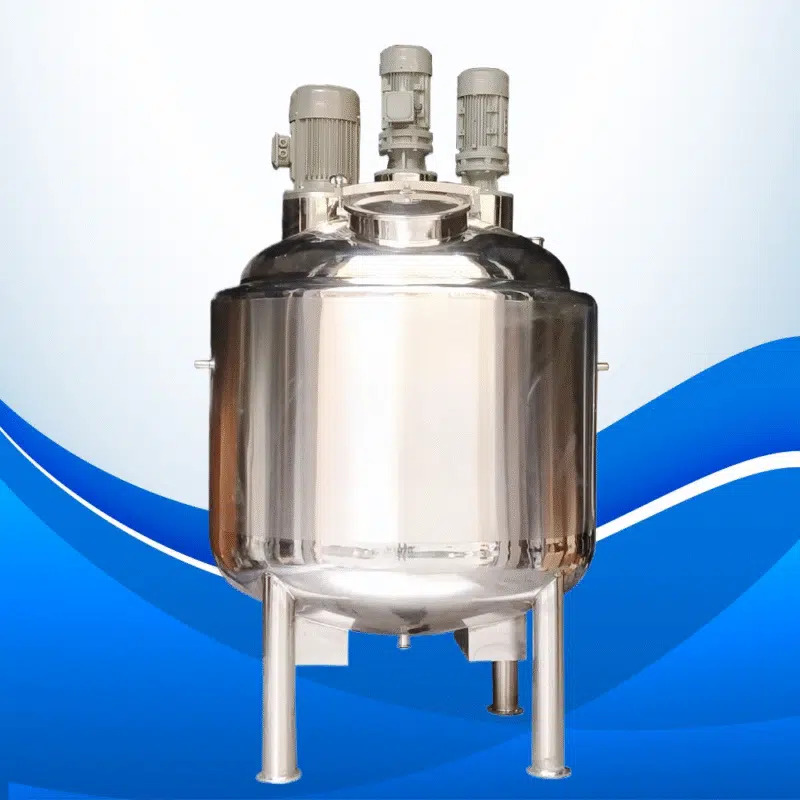Stainless Steel Mixing Tanks for Cosmetics: What to Look For
The cosmetics industry demands precision, hygiene, and reliability in every aspect of production. When manufacturing skincare products, makeup formulations, or...

The cosmetics industry demands precision, hygiene, and reliability in every aspect of production. When manufacturing skincare products, makeup formulations, or personal care items, the equipment you choose directly impacts product quality and safety. Stainless steel mixing tanks have become the industry standard for cosmetic production, offering superior performance characteristics that meet stringent regulatory requirements while ensuring consistent results.
Selecting the right mixing tank requires careful consideration of multiple factors that affect both immediate production needs and long-term operational efficiency. Understanding these key elements will help manufacturers make informed decisions that support their production goals while maintaining the highest quality standards.
Material Grade and Composition Standards
316L Stainless Steel Requirements
The grade of stainless steel used in cosmetic production equipment significantly affects both performance and compliance. Grade 316L stainless steel represents the gold standard for cosmetic manufacturing applications due to its superior corrosion resistance and low carbon content. This specific grade contains molybdenum, which provides enhanced resistance to chloride corrosion and reduces the risk of pitting when exposed to acidic or alkaline cosmetic formulations.
The low carbon content in 316L stainless steel minimizes carbide precipitation, which can create weak points in the material structure. This characteristic proves essential when processing cosmetic products that contain active ingredients or preservatives that might otherwise compromise standard steel grades.
Surface Finish Specifications
Surface finish quality directly impacts cleaning efficiency and product contamination prevention. Ra values between 0.5 and 0.8 micrometers provide optimal results for most cosmetic applications. This level of smoothness prevents bacterial adhesion while allowing thorough cleaning and sanitization between production batches.
Electropolishing treatment further improves surface characteristics by removing microscopic imperfections and creating a uniform, non-porous surface. This process eliminates potential contamination points and simplifies validation procedures required by regulatory agencies.
Design Features and Construction Elements
Tank Geometry and Volume Considerations
The shape and size of your mixing tank affect mixing efficiency and product homogeneity. Cylindrical tanks with conical or dish-shaped bottoms provide optimal mixing patterns for most cosmetic formulations. The height-to-diameter ratio should typically range between 1:1 and 1.5:1 to achieve proper vortex formation and ingredient incorporation.
Working volume calculations must account for foam generation, temperature expansion, and mixing requirements. Most cosmetic applications require tanks designed for 70-80% working capacity to prevent overflow during vigorous mixing operations while allowing adequate headspace for foam control.
Agitation Systems and Mixer Selection
The mixing system represents the heart of any cosmetic production setup. Top-entry mixers offer accessibility advantages for maintenance and cleaning, while bottom-entry systems provide better mixing efficiency for high-viscosity products. Magnetic drive systems eliminate shaft seals, reducing contamination risks and maintenance requirements.
Impeller selection depends on product viscosity and desired mixing characteristics. Propeller-type impellers work well for low-viscosity liquids, while anchor or helical ribbon impellers handle thick creams and lotions more effectively. Variable speed drives allow operators to adjust mixing intensity based on formulation requirements and processing stages.
Stainless Steel Mixing Tanks for Cosmetics: What to Look For in Quality Standards
Welding and Joint Quality
Weld quality directly affects tank integrity and cleanability. All welds should meet sanitary standards with smooth, continuous beads that eliminate crevices where bacteria or product residue might accumulate. TIG welding with appropriate filler materials ensures consistent results and maintains the corrosion resistance properties of the base material.
Orbital welding techniques provide superior consistency for critical joints, particularly around nozzle connections and bottom outlets. This automated process eliminates human variables that can affect weld quality and creates joints that meet pharmaceutical-grade standards.
Pressure and Temperature Ratings
Cosmetic production often involves heated ingredients or vacuum operations that create pressure differentials. Tanks must be designed and certified for expected operating conditions with appropriate safety margins. Typical cosmetic applications require vessels rated for full vacuum operation and temperatures up to 180°F (82°C).
Pressure relief systems protect against overpressurization during heating operations or when processing volatile ingredients. These safety features prevent equipment damage and ensure operator safety during normal and upset conditions.
Cleaning and Maintenance Accessibility
CIP (Clean-in-Place) System Integration
Modern cosmetic production requires efficient cleaning procedures that minimize downtime while ensuring complete sanitation. Spray ball systems provide 360-degree coverage for effective cleaning solution distribution throughout the tank interior. The spray ball design should create overlapping spray patterns that reach all internal surfaces without leaving dead zones.
CIP connections must be positioned to prevent product contamination during normal operations while providing easy access for cleaning system integration. Quick-disconnect fittings allow rapid changeover between production and cleaning modes.
Drainage and Residue Removal
Complete drainage prevents cross-contamination between different product batches and reduces cleaning time requirements. Tank bottoms should slope toward drain outlets with minimum slope angles of 2 degrees to ensure complete liquid removal. Tri-clamp connections on drain valves facilitate easy disassembly for thorough cleaning and inspection.
Sight glasses positioned at low points allow operators to verify complete drainage and detect any residual product that might indicate cleaning system problems or tank design issues.
Regulatory Compliance and Documentation
FDA and cGMP Requirements
Cosmetic manufacturing equipment must comply with current Good Manufacturing Practices (cGMP) regulations that govern product safety and quality. Documentation packages should include material certifications, weld procedures, pressure testing records, and surface finish verification. These records demonstrate compliance during regulatory inspections and support product liability protection.
Material traceability becomes critical when supplying products for export markets that may have additional requirements beyond domestic regulations. Complete documentation allows manufacturers to demonstrate compliance with international standards and facilitate market access.
Validation Support Features
Equipment design should support validation activities required for cosmetic production. This includes provision for temperature monitoring points, sampling ports positioned for representative sample collection, and documentation of mixing performance characteristics. Computational fluid dynamics (CFD) analysis can provide scientific evidence of mixing effectiveness for validation files.
Calibration points for instrumentation must be accessible without compromising product contact surfaces. This allows routine verification of measurement accuracy while maintaining sanitary conditions.
Cost Considerations and Long-term Value
Initial Investment vs Operating Costs
While high-quality stainless steel mixing tanks require significant upfront investment, the total cost of ownership often favors premium equipment. Reduced maintenance requirements, longer service life, and improved cleaning efficiency offset higher initial costs over the equipment lifecycle.
Energy efficiency considerations include mixer motor sizing, heating system design, and insulation specifications. Properly sized equipment operates more efficiently and provides better temperature control while reducing utility costs.
Supplier Support and Service Capabilities
The relationship with your equipment supplier extends well beyond the initial purchase. Technical support capabilities, spare parts availability, and service response times affect production continuity and maintenance costs. Suppliers with cosmetic industry experience understand unique requirements and can provide valuable guidance during equipment selection and commissioning.
Training programs for maintenance staff and operators ensure proper equipment utilization and extend service life. Comprehensive documentation and troubleshooting guides support in-house maintenance capabilities while reducing dependence on external service providers.
Selecting the right mixing tank requires balancing immediate needs with long-term operational goals. Quality equipment from reputable suppliers provides the foundation for consistent product quality and regulatory compliance while supporting efficient production operations. The investment in properly specified stainless steel mixing tanks pays dividends through improved product quality, reduced downtime, and simplified regulatory compliance throughout the equipment lifecycle.



